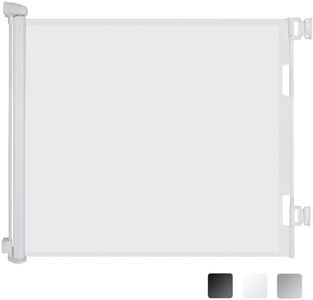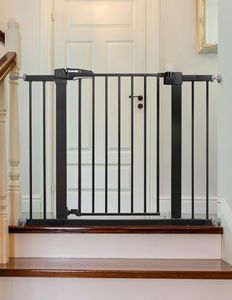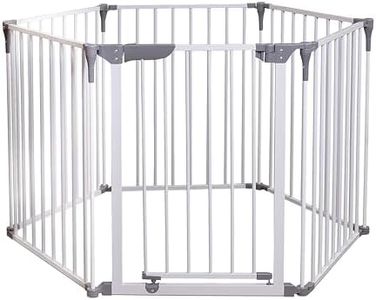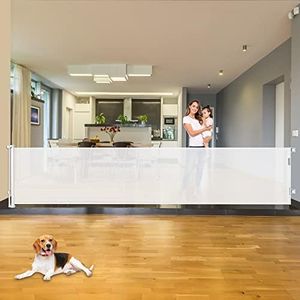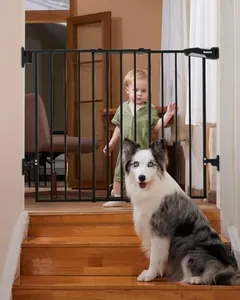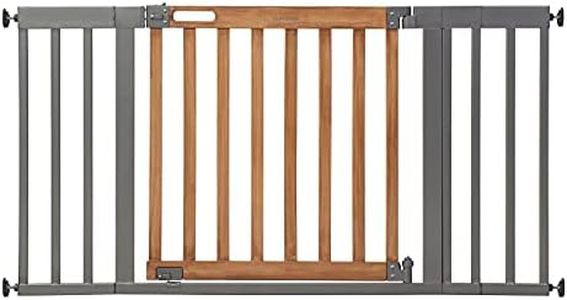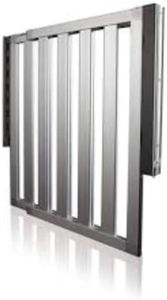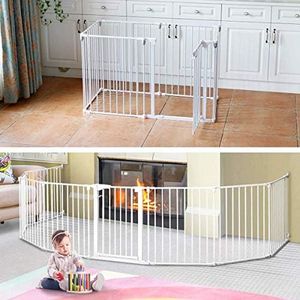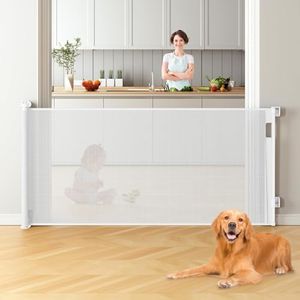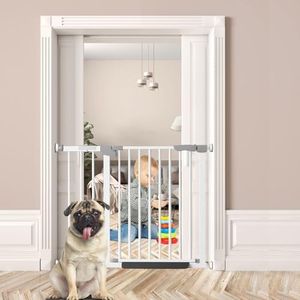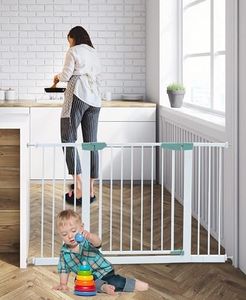We Use CookiesWe use cookies to enhance the security, performance,
functionality and for analytical and promotional activities. By continuing to browse this site you
are agreeing to our privacy policy
10 Best Baby Gates
From leading brands and best sellers available on the web.Buying Guide for the Best Baby Gates
Choosing the right baby gate is crucial for keeping your baby safe as they start to crawl and explore. Baby gates help create secure boundaries around stairs, kitchens, or any area you want to keep off-limits. Start by identifying where you want to use the gate, how often you’ll need to open and close it, and who will be using it (adults, older children too). Think about whether you’ll need to move the gate between different locations and any special features that would make your daily routine easier.Type (Pressure-Mounted vs. Hardware-Mounted)The type of installation is important because it determines how securely the gate stays in place. Pressure-mounted gates use tension to stay between walls and are easy to install and remove, making them great for areas where you don’t want to drill holes, like doorways. However, they aren’t as secure for the top of stairs. Hardware-mounted gates require you to attach them with screws, which makes them more secure for high-risk areas like staircases. To choose the right type, think about where you’ll install the gate and whether you need to avoid making holes in your walls.
Width and AdjustabilityWidth is how wide the gate can stretch to cover openings—this is important because doorways and hallways come in different sizes. Many gates have adjustable panels or extensions, so they fit a range of spaces. Standard gates fit typical doorways, while some can stretch to cover wide spaces or be configured in odd shapes. To select the right size, measure the opening where you want to place the gate and check the gate’s minimum and maximum width range.
HeightHeight matters for safety, especially as your child grows. Taller gates provide extra security for large or active toddlers who might try to climb. Shorter gates are lighter and easier for adults to step over, but may not be as secure for older or more adventurous kids. Consider your child’s age, size, and climbing ability to decide the appropriate height—if in doubt, go a bit taller.
MaterialBaby gates are usually made from metal, wood, or plastic. Metal gates tend to be the most durable and secure, which is useful for stairways or for pets as well as children. Wooden gates can be attractive and fit in well with home decor, but may not be as sturdy. Plastic is lightweight and easy to clean, but usually best for occasional or lightweight use. Think about what matches your home's style and how much wear and tear the gate will face day to day.
Opening and Closing MechanismGates can have different ways to open and close—some swing open like a door, others slide, and some need to be removed entirely to pass through. Look for mechanisms that are easy for adults to operate but difficult for children. Self-closing gates or gates that latch automatically can add convenience and safety. Consider who will be passing through the gate most often, and if you’ll usually have full hands, an easier latch might be helpful.
Portability and Ease of RemovalIf you need to move the gate between different areas or take it on trips, portability is important. Some gates are very light and fold flat for easy storage or transport, while others are more permanent fixtures. Decide whether you need a gate that’s easy to move or one that will stay in one place for a long time.
Safety CertificationsChecking for safety certifications ensures that the gate meets recognized safety standards. Certifications mean that the product has passed certain tests for things like stability, proper spacing, and materials. Look for gates that mention meeting safety standards for added peace of mind, especially if the gate is for use at the top of stairs.
